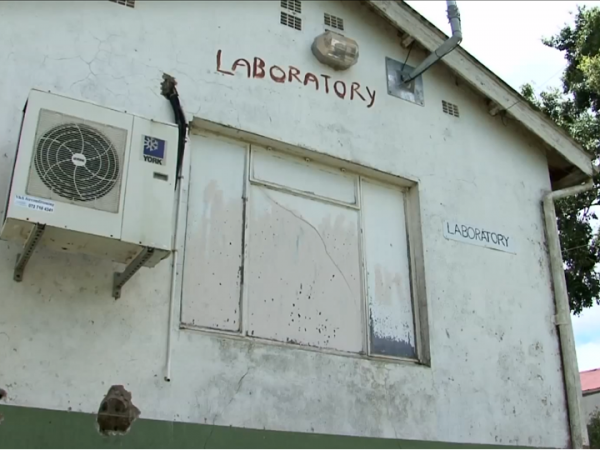When the solution compounds the problem

In April 2012, the Eastern Cape Department of Health (ECDoH) put in place a moratorium on the appointment of healthcare workers to vacant posts at facilities throughout the province. This moratorium was instituted in an attempt to control the chronic overspending that was pushing the department deeper into financial crisis each year.
The decision was based on the view that the bulk of the department’s budgetary shortfall of nearly R2-billion for the 2012/13 financial year, was caused by ballooning staffing costs that had to be controlled if the department was to prevent the collapse of service delivery.
In reality, the moratorium turned out to be a somewhat short-sighted attempt at austerity that pushed the already overstretched healthcare workers to breaking point, as they were forced to carry an additional and unsustainable burden of care. This is particularly true for rural facilities, where the loss of just one nurse, doctor or pharmacist can bring service delivery to a standstill.
A superficial assessment of the department’s budget will show that overspending on staff does appear to be the cause of its financial woes. In 2011/12 alone, the department overspent on its staffing budget by more than R1-billion because of higher than inflation increases to salaries, poorly managed employee benefits, such as the Occupational Specific Dispensation, and a personnel and salaries system that doesn’t actually reflect the employee establishment.
But overspending on staffing is only a symptom of more complex and longstanding problems with the management of the health budget, which have persisted for more than a decade. Underfunding, poor financial management and corruption are endemic and persistent features of the Eastern Cape health system.
The Eastern Cape is one of South Africa’s most deprived provinces, yet has amongst the lowest per capita expenditure on primary health care. The province is caught in an infrastructure capacity trap: its budget is based on the system’s capacity to absorb funds, while its ability to increase this capacity will require an increase in funding.
This trap is indicative of a budgetary system where decisions are based on crude assessments of historical spending and not on any measure of need, demand, or what it actually costs to deliver services in this largely rural province.
Yet, even if the province had a budget that more accurately reflected need and accounted for the higher costs of delivering services in a largely rural area, there is little reason to believe that, in a climate of entrenched inefficiency, financial mismanagement and corruption, this money would lead to significant improvements in the provincial health system.
The Auditor General’s annual audit has over the last decade revealed that tens of millions of rands are lost each year through a mix of deliberate fraud, improper financial oversight, and poorly managed supply chain systems.
In 2005, the Pillay Commission into maladministration, fraud and corruption in the public sector in the province found that, in addition to underfunding, the centralisation of administrative functions and an inefficient bureaucracy significantly delayed the purchase and delivery of basic goods and services. What made the situation worse is that when these goods and services were delivered, they were often not fit for the purpose.
By 2009, little had changed, and many of the commission’s findings were repeated by the Integrated Support Team (IST) investigations into financial mismanagement within the ECDoH. The IST reported that the roles and responsibilities between different levels of management within the ECDoH, and between the political and administrative role-players, were not clear.
This fragmented cadre leadership responded to systemic challenges by using centralisation as a means of problem solving, creating additional structures and systems to address the inefficiency problem.
Unsurprisingly, this solution has not resolved the lack of cohesion between policy formulation, budgets, and the resources needed to implement the policies and planning.
A trend highlighted in the IST’s findings is that the ECDoH, in trying to manage rather than confront financial management weaknesses, has actually resorted to limiting service delivery and withholding payments to employees and providers of goods and services, as a means of managing overspending.
The provincial department’s inability to implement and oversee proper systems of financial management and accountability has opened the door to endemic fraud and corruption, the extent of which has been most clearly demonstrated by the findings of a Special Investigations Unit (SIU) investigation into corruption in the provincial department. Based on their audit of processes and contracts, they showed that in the 18 months between January 2009 and June 2010, officials and their associates pocketed more than R800-million.
Despite the unambiguous and verifiable findings and recommendations of special commissions and oversight bodies such as the AG, IST and SIU, the ECDoH has largely failed to implement any far-reaching or meaningful solutions. They deny that their financial management problems are as dire as they are, and they continue to placate oversight committees and politicians with promises of turnaround strategies, which never materialise.
As any good psychologist would tell you, for recovery to take place, you first have to admit that you have a problem. You must then be ready to ask for help and be willing to accept it. Based on their response to all the evidence presented to them in the past, it is clear that the ECDoH remains unwilling to admit to the severity of the crisis. Such dithering is going to continue to drive the collapse of services in the province; a collapse that has, is and will continue to cost lives.
Daygan Eagar works for the Rural Health Advocacy Project and is a Budget Analyst.
Support independent journalism
Donate using Payfast


This article is licensed under a Creative Commons Attribution-NoDerivatives 4.0 International License.
